Website deployment on IIS7
Requirements
- Windows Server 2008 or higher
- IIS 7.0
- For MVC applications Framework higher than .Net 4.0
- Libraries in Setups_3.0.8


Application publishing
WebAdmin Solution
In Visual Studio, open the Webadmin solution and do the publishing in project “Administration”.

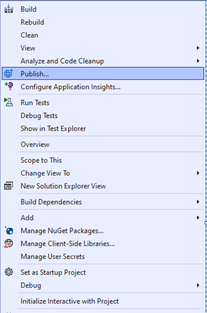
Usually we use “Folder” option, but choose the best option for your deployment.
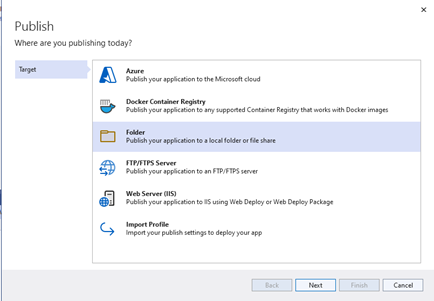
There is a default location, you can change it if you want.
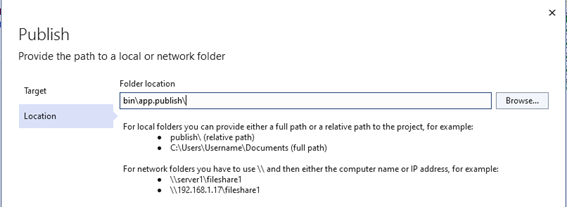
Before publish, check if all options are right. Remember, application must be published in “Release”.
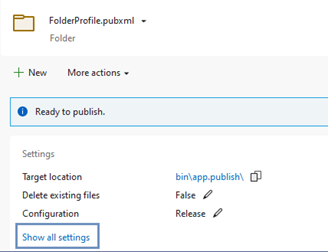
Application Solution
In Visual Studio, open the application solution and do the publishing in project “GenioMVC”.
The publish steps are the same as for publishing the Webadmin solution (above).
Setup configuration
Application Pools
First, you'll need to the IIS Manager, to do this, open the Windows Control Panel, then, Administrative Tools and finally open the Internet Information Services Manager.
- Create the Application Pools. This application pool allows you to run the Administration portal with higher privileges. Add Application Pool, choose .Net Framework v4 and Managed Pipeline Mode as “Integrated”.
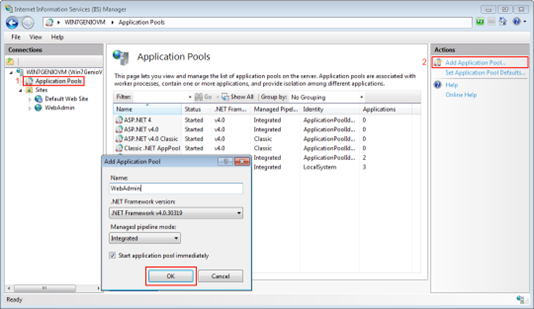
Then select the newly created application pool, and click on “Advanced Settings”, and change the “Identity” to “LocalSystem”.

- For QWeb applications . Make sure you have an application pool with .Net 2.0 and Managed Pipeline mode “Classic"
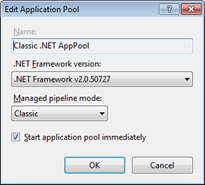
- For MVC applications. Make sure you have an application pool with .Net 4.0 and Managed Pipeline mode “Integrated"
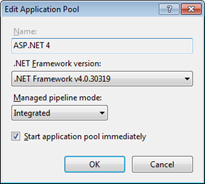
Secondary Website
Create a secondary website for better isolation and security. Although it is not mandatory, it’s highly recommended to maintain all the administration websites running on a different port. In order to do this, you’ll have to do the following steps:
- “Add Web Site…”, fulfill the site name eg: “WebAdmin”.
- In “Application pool” choose the previously created “WebAdmin”, and use the folder that contains your published WebAdmin application as the “Physical path”
- In Port we suggest port 88, although you can choose any other port
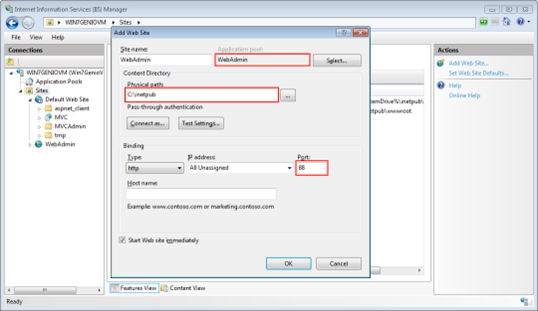
IIS Applications
In order to run the websites, you’ll need to convert the website folders to application. In this case we’ll convert first the administration website and later each application.
Setup the administration Website. Inside the “WebAdmin” site, choose “Add Application”, be sure to choose the right “Application pool” for the administration web site, in this case, you’ll choose the previously created application pool the “WebAdmin”.
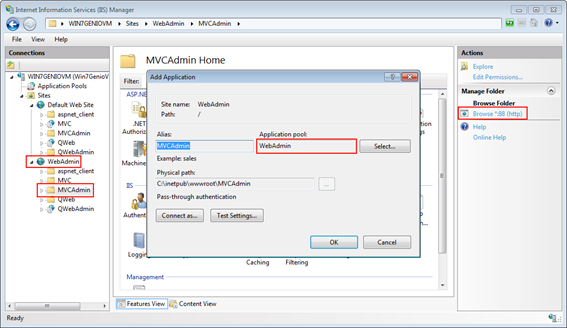
Setup the application websites – Qweb applications To install a Qweb application, right click on QWeb folder inside the “Default Web Site”, choose “Add Application, be sure to choose the right “Application pool” for the web site, in this case, you’ll choose a .NET 2.0 and Classic pipeline mode (Classic .Net AppPool).
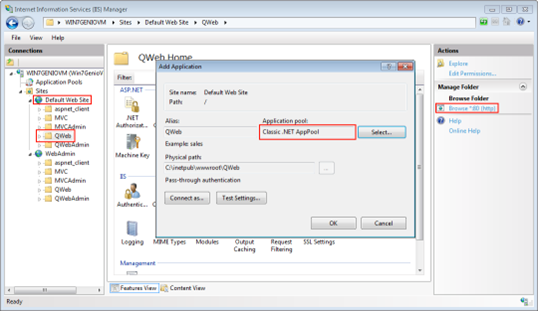
Additionally, you’ll need to add the default document since this is a “Classic” web site application. Simply choose the Qweb Application, click on “Default Document”, click on “Add” and type the html index file of your web site, the html file name is composed by
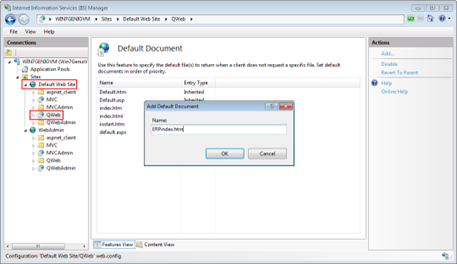
For the MVC site, you would have to right click on MVC folder inside the “Default Web Site”, choose “Add Application”, be sure to choose the right “Application pool” for the web site, in this case, you’ll choose a .NET 4.0 and Integrated pipeline mode application pool (ASP .Net 4).
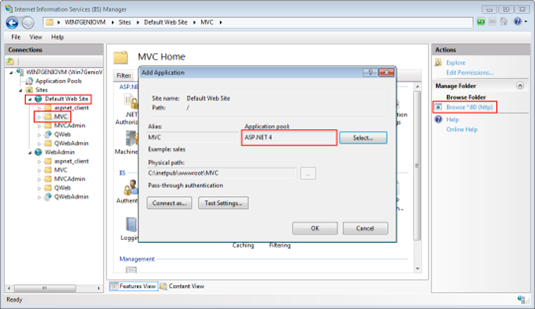
Application base Setup
Accessing the Web Administration website.
In IIS Manager, select the application of your Webadmin that you already added and open it in a browser.
Otherwise, you could open a web browser and on the address bar type http://
Setup the database connection
Click on “System Configuration”
Here you can setup the basic database configuration options for your Quidgest Web Solution.
- Database Server name – Input the server name or SQL full instance name.
- Port – Input the Database server port number or leave it for default value.
- Database Server Type – Select your database system.
- Database Name – Usually used when there’s multiple databases of the same system in the same server, the database name will be named the following way,
. Eg: ERPProduction2019, where “ERP” is the system symbol, “Production” is the database suffix name and “2019” the year, case your system isn’t using the database per year, it will use 0 as year value. - Username, Password and Password confirmation – The username used by the application for database access, the respective password, and “Password confirmation” used to avoid typing errors.

Configuration redirection
If you wish to share the configurations made in WebAdmin across your applications you need to place a file in each application to redirect the configuration location. This file can be downloaded in WebAdmin in: System Configuration -> Application. If your applications and administration website are all installed on the same machine you can just download the Configuracoes.redirect.xml file and install it in each application, without modification.

After downloading the file, place it in the “Physical Path” of your applications, next to the Web.config file.